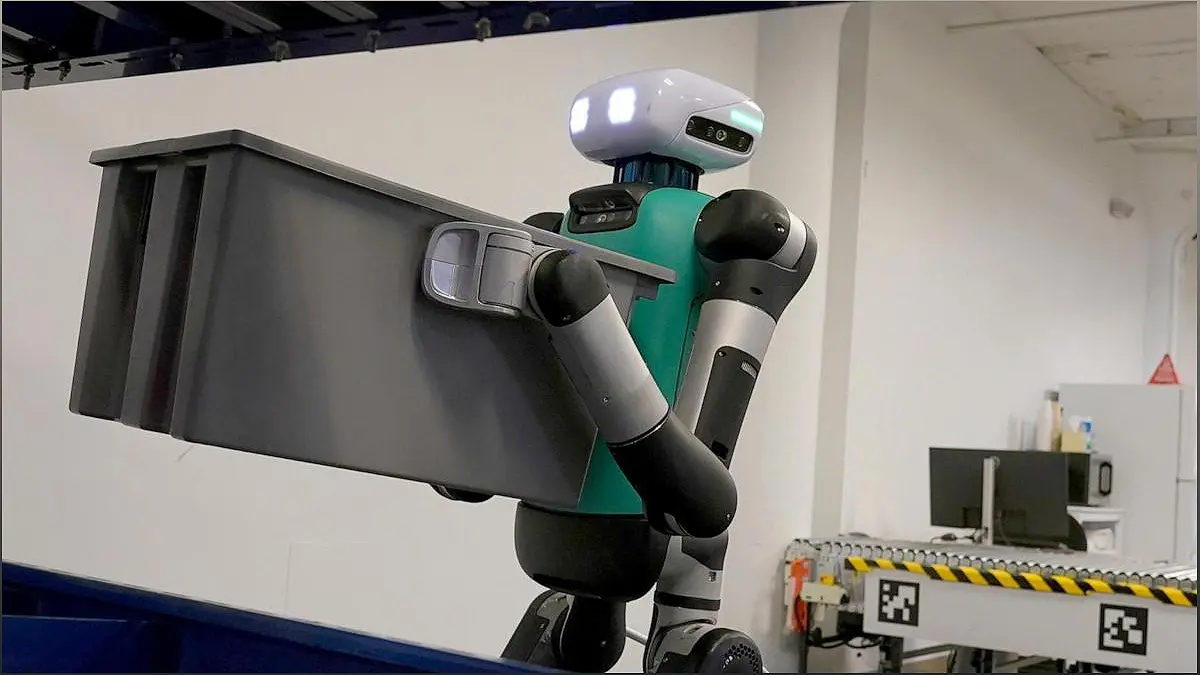Building a robot that’s both human-like and useful has been a long-standing engineering dream. In recent years, startups have been investing in the development of humanoid robots, aiming to create machines that can operate in human spaces. While current prototypes may appear clumsy, they hold great potential for revolutionizing industries. In this article, we will explore the rise of human-centric robots, their applications, and the exciting future they promise.
The Evolution of Human-Centric Robots
Explore the journey of human-centric robots and their transformation over the years.
Human-centric robots have come a long way since their inception. From the early prototypes that struggled to mimic human movements, to the advanced machines of today, the evolution of these robots has been remarkable. With each iteration, engineers have overcome challenges and refined their designs to create robots that can operate in human spaces with greater efficiency and effectiveness.
One of the key milestones in the evolution of human-centric robots was the development of advanced sensors and perception systems. These technologies enable robots to understand and interact with their environment, making them more capable of performing complex tasks. Additionally, advancements in artificial intelligence and machine learning have empowered robots to learn and adapt, enhancing their problem-solving abilities.
As the field of robotics continues to progress, we can expect even more impressive advancements in the coming years. From improved mobility and dexterity to enhanced communication and collaboration capabilities, human-centric robots are poised to revolutionize various industries and redefine the way we live and work.
Applications of Human-Centric Robots
Discover the diverse range of industries and sectors where human-centric robots are making an impact.
Human-centric robots have the potential to transform numerous industries, offering innovative solutions to complex challenges. In the healthcare sector, these robots can assist with patient care, performing tasks such as monitoring vital signs, providing medication reminders, and even conducting basic medical procedures under the supervision of healthcare professionals.
Another area where human-centric robots are finding applications is in the manufacturing industry. These robots can work alongside human workers, handling repetitive and physically demanding tasks, thereby improving productivity and reducing the risk of injuries. With their advanced perception and manipulation capabilities, they can also contribute to quality control and assembly line operations.
Furthermore, human-centric robots are being deployed in logistics and warehousing, where they can efficiently handle tasks such as order picking, inventory management, and package delivery. By automating these processes, businesses can streamline their operations and improve overall efficiency.
These are just a few examples of the wide-ranging applications of human-centric robots. As technology continues to advance, we can expect to see these robots playing a crucial role in sectors such as agriculture, hospitality, education, and more.
Challenges and Future Outlook
Explore the obstacles faced by human-centric robots and the potential future developments in this field.
While human-centric robots hold immense potential, they also face several challenges that need to be addressed. One major hurdle is the development of robust and reliable navigation systems that allow these robots to move seamlessly in complex and dynamic environments. Additionally, ensuring the safety of human-robot interactions and addressing ethical concerns are critical considerations.
Looking ahead, the future of human-centric robots is promising. Researchers and engineers are actively working on enhancing the capabilities of these robots, focusing on areas such as mobility, dexterity, and human-like communication. As advancements in artificial intelligence and machine learning continue, we can expect human-centric robots to become even more intelligent, adaptable, and capable of performing a wide range of tasks.
Moreover, the integration of human-centric robots with emerging technologies like virtual reality and augmented reality opens up new possibilities. These robots could be used for remote assistance, telepresence, and immersive training experiences, revolutionizing the way we collaborate and learn.
As the field continues to evolve, it is crucial to ensure that human-centric robots are developed and deployed responsibly, considering the potential impact on society, the workforce, and the overall well-being of individuals. With careful planning and collaboration, human-centric robots have the potential to create a future where humans and robots coexist harmoniously, augmenting each other's capabilities and improving the quality of life for all.
Conclusion
Human-centric robots have emerged as a fascinating area of innovation, combining the qualities of human-like interaction with practical functionality. The evolution of these robots has been driven by advancements in technology, enabling them to navigate human spaces and perform complex tasks with greater efficiency. From healthcare to manufacturing and logistics, human-centric robots are making a significant impact across various industries.
While there are challenges to overcome, such as navigation and safety concerns, the future outlook for human-centric robots is promising. With ongoing research and development, these robots will continue to evolve, becoming more intelligent, adaptable, and capable of enhancing human lives in numerous ways. It is crucial to approach the development and deployment of human-centric robots responsibly, ensuring their integration aligns with societal needs and values.
As we embark on this new era of robotics, the collaboration between humans and robots will play a vital role. By harnessing the strengths of both, we can create a future where human-centric robots augment our capabilities, improve productivity, and contribute to a better quality of life for all.
FQA
What are the potential applications of human-centric robots?
Human-centric robots have diverse applications across industries such as healthcare, manufacturing, logistics, and more. They can assist with patient care, perform tasks in manufacturing processes, and optimize operations in warehouses and distribution centers.
What are the challenges faced by human-centric robots?
Human-centric robots face challenges in navigation, safety, and ethical considerations. Developing robust navigation systems, ensuring safe human-robot interactions, and addressing ethical concerns are crucial aspects that need to be addressed.
What does the future hold for human-centric robots?
The future of human-centric robots is promising. Advancements in artificial intelligence, machine learning, and emerging technologies like virtual reality and augmented reality will further enhance their capabilities. These robots will become more intelligent, adaptable, and integrated into various aspects of our lives.

